By Jenuine Poetess
There is an age-old stereotype that artists thrive in chaos…or maybe not thrive, but that artists exist in disorganized mayhem. And admittedly, I have my fair share of disorderly conduct around my home and studio. The good news is, that there are more and more creative solutions for implementing and maintaining order in one’s life.
If you’ve been feeling a bit out of sorts in your life, now is a perfect time to integrate some new habits, new creative outlets, and new methods for tracking your life. Whether you would like more regular joy intervals in your week, or you need a way to track those art commissions coming up for spring, or you have writing goals you keep forgetting about, my hope is that by the end of this post you will have some practical tools for artfully organizing your days, weeks, and months.
Jars
Over the past few years there’s been a growing trend to find a jar, mug, bowl, box, journal, some kind of beloved receptacle, in which individuals, couples, or families place slips of paper on which they have written their gratitudes, joys, happinesses, made-it-happen victories, favorite memories, or whatever else you wish to collect! Some people review them weekly, some monthly, and some annually as a New Year’s Eve tradition. In my knowledge, author Elizabeth Gilbert was one of the pioneers of this kind of project but many others have modified, expanded, and customized the concept. The fun part is you can get as creative as you like with the container, the papers, what you document, and how you revisit them!

(image source)
Art Journaling
Some people prefer to process their lives, thoughts, memories, and goals via journal. Art journaling is a process that integrates a mixed media approach to the reflection/meditation process. This site has a collection of techniques, prompts, and inspirations for visually documenting important moments in life. As I move through my personal healing and growing process, grief is a big work I am moving through. To cultivate balance, I decided to document moments of joy alongside my grieving. Here is a sample from one of my art journals: a visual interpretation of a J.K. Rowling quote on grief, and a collection of joyful moments from that day: walking in the rain with my favorite umbrella (a stained glass lamp inspired design) and an artjam session with a good friend.
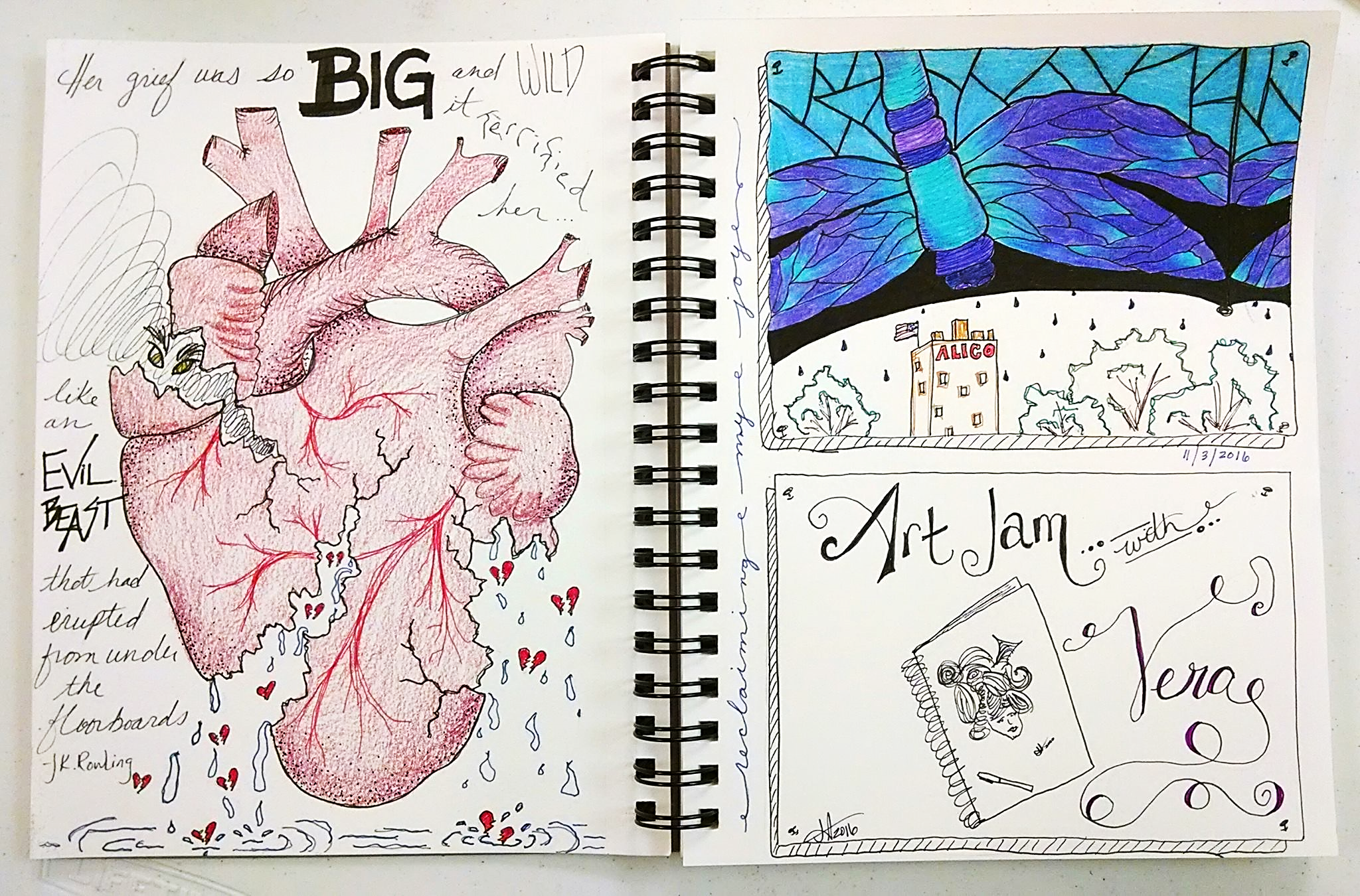
If you’re feeling at a loss for what to art journal about or where to begin, this blog post offers 10 ideas/prompts to get you started. This example shows several mantras interspersed between daily reflections. Whether you’re collecting poems, creative projects, your personal reflections, or notes from class or a meeting—using art to visually document your work can also help your mind remember and recall the content in ways different than text-only notes can offer. This is especially useful for anyone who is a visual learner!

(image source)
Bullet Journaling
You may have heard the recent buzz about bullet journaling…it’s taken off like a shot 😉 In my research, I discovered that this system of organizing, recording, and tracking life was developed by Ryder Carroll, a designer from Brooklyn, NY. The practice is meant to be tailored to suit each person’s creative outlets and personal needs.
Many bullet journals include monthly sections and ongoing sections. In a monthly section one might find logs such as: habit tracker, food & water intake log, gratitude diary, task lists, brain storm pools, budgets & expenses, meal and grocery planning, and future planning. Ongoing logs might include: movies/shows to watch, books to read, items out on loan, birthday & holiday calendar, savings tracker, workshops to take, hobbies to learn, garden planning, blog/social media post ideas, recipes to try, vent session/solution ideas, travel, experiences, quotes, art projects, and more! There is no limit to what you can record and gather in your bullet journal but if you need some ideas to get you started, this list is a great beginning.
Administrative responsibilities are not always an artist’s favorite chores, but if there is a way to do it artfully, we just might be inspired to stick with it…and maximize our creative play time while we’re at it! Check out these amazing examples:
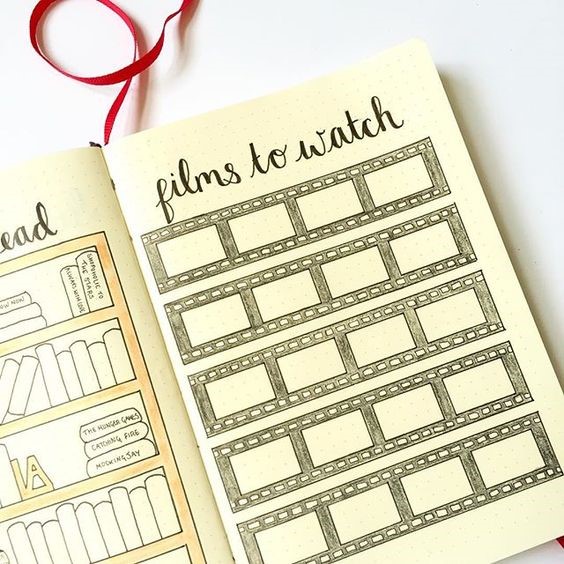
Why make a regular list when you could create a visual index?! Image source.

House projects and chore lists just got a whole lot more exciting! Image source.

Daily tasks, notable quotes, and illustrated smoothie recipes reflect this bullet journalist’s dynamic days. Image source.

Some prefer clean lines and a minimalist approach to bullet journaling…the good news? Anything goes! Image source.
Maybe you want to remember which pens work best on which surface—make a bullet journal log for it. Maybe you need to keep track of your inventory for the upcoming ComiCon or artist market—make a bullet journal log for it. Maybe you want to collect data so that you can determine when are your busiest and your slowest times of year for custom art commissions—make a bullet journal log to track it. Maybe you want to remember which brand of paint or pen or paper or ink or fabric is your favorite for which kind of project–*say it with me now* make a bullet journal log for it!
However you work best, use that method to organize your life. Who says spreadsheets are the only way to keep track of data? And the best thing about using creative process to take care of your life business? You have a tangible place you can go back and look up items for reference, to compare productivity over the years, identify which months are most creatively productive and which are slower. And the more we know ourselves, the more dynamic our art becomes!
What are your favorite tools for restoring, creating, and maintaining order in your life…with a splash of art? Share with us in the comments! We love to learn new things from our readers. And if you have a skill you’d love to share with others, consider leading a workshop to spread the joy!
 Jenuine Poetess is an artist, visionary, and community organizer. In 2010, she founded In the Words of Womyn (ITWOW), an international, grass-roots, written and spoken-word arts project with chapters throughout Los Angeles, CA; Waco, TX; and Lebanon. Jenuine is the founder of Waco Poets Society and co-founder of the Central Texas Artist Collective. She writes, organizes, and creates rooted in the fierce conviction that holding intentional space, access, and opportunity for all people to foster their creative health is a matter of justice and is a vital asset to the sustainable thriving of communities. She currently lives and poems in Central Texas where she enjoys finding new ways to disrupt the homeostasis of her city. You can contact her at: j[email protected] .
Jenuine Poetess is an artist, visionary, and community organizer. In 2010, she founded In the Words of Womyn (ITWOW), an international, grass-roots, written and spoken-word arts project with chapters throughout Los Angeles, CA; Waco, TX; and Lebanon. Jenuine is the founder of Waco Poets Society and co-founder of the Central Texas Artist Collective. She writes, organizes, and creates rooted in the fierce conviction that holding intentional space, access, and opportunity for all people to foster their creative health is a matter of justice and is a vital asset to the sustainable thriving of communities. She currently lives and poems in Central Texas where she enjoys finding new ways to disrupt the homeostasis of her city. You can contact her at: j[email protected] .
The Act Locally Waco blog publishes posts with a connection to these aspirations for Waco. If you are interested in writing for the Act Locally Waco Blog, please email [email protected] for more information.
(During December we will be reprising some of “2017’s greatest hits” from the Act Locally Waco blog. I couldn’t possibly pick my favorites – so I used the simple (cop out?) approach of pulling up the 10 blog posts that got the most “opens” according to our Google Analytics. It is an intriguing collection that gives at least a little insight into the interests and concerns of Act Locally Waco readers. I hope this “Top 10” idea inspires you to go back and re-read your personal favorites. There have been so many terrific ones… If you would like to see the Top 10 according to Google Analytics, here’s the link: 2017 Greatest Hits. Merry Christmas! — ABT)
By Leslie King
On December 13, I was struck by a letter to the editor from David Trayler that appeared in the Waco Trib. In it he referred to Rev. Kyndall Rothaus of Lake Shore Baptist Church as a “lady pastor.”
In the letter, “Lady” as adjective implies something less acceptable than a real pastor. The implication, intended or not, is that a real representative for God is not a lady or a woman but a man. Such a notion is a theological shortcut that is damaging to our shared life, as well as God’s integrity and freedom.
Shortcuts, whether geographic or mental, benefit us by getting us quickly from point A to point B. That’s the benefit. Shortcuts also mean there is a lot of the proverbial landscape that we will not experience. When we understand God only as man or father, there is a lot about God that we do not see and we do not understand.
God as masculine is set early for many of us in the Christian tradition. Images of Jesus and disciples are pillars in the God-as-male argument.
My own theological shortcut on masculinity and God has been firmly in place since early childhood. My dad, himself a pastor, played his part in this shortcut. He was and is an encourager and my mentor, calling me to challenges and celebrating successes. So you can see, even as I was on track for ministry, my primary understanding of God was male.
The mental and spiritual shortcut was a well-worn path. It was not until the day of my ordination, when my father helped me slip into my robe in front of a dressing mirror that I saw it most clearly. Looking into the mirror, I saw Dad and I saw myself. I saw a pastor and a lady pastor. That was 21 years ago and I am still reconsidering the shortcut entrenched in my brain.
For me, this has been something like taking the long way to reflect on my experiences and to try to understand the experiences of others. The long way still reminds me of Robert Frost’s poem “The Road Less Traveled”. Unlike the poem, going the long way has not been lonely but rather a more densely populated route than the shortcut. I have found others who are navigating around their mental and spiritual shortcuts.
The long way is full of questions. “Does God intend to sort people into winners and losers?” “Are we encouraging right understanding of God when religion issues “loving ultimatums” on what is acceptable and what is not acceptable?” These questioning people are not interested in relativism or an “anything goes” culture. Rather, they seem to be examining their shortcuts. They seem genuinely curious to re-examine the constricting truths told to them about God versus their experience of God.
We are, many of us, navigating around insufferable shortcuts. We go the long way through scripture, tradition and experience realizing that gender has never been the only way we understood ourselves. It is not the only way we understand God.
For my part, I remember the stories of scripture wherein Jesus went the long way around the organized religion of his day. These texts remember his wandering through wilderness, township, home and hearth. “Your faith has made you well,” he spoke to some of the most unlikely candidates on a cultural scale of promise. There is something of them in all of us.
Such encouraging words are needed today. There is a longing to navigate with integrity around the shortcut and live into deeper and broader truths. Some say that the Spirit of Christ still takes the long way round the roughly hewn exclusions within his own church.
 This week’s Act Locally Waco blog post is by Rev. Dr. Leslie Ann King of First Presbyterian Church, Waco.
This week’s Act Locally Waco blog post is by Rev. Dr. Leslie Ann King of First Presbyterian Church, Waco.
The Act Locally Waco blog publishes posts with a connection to these aspirations for Waco. If you are interested in writing for the Act Locally Waco Blog, please email [email protected] for more information.
by Jessica Shelton
It has been my experience that most people have at least one thing that really lights them up. Something that, when they participate in it or observe it, creates a feeling of joy in that person. Their emotions run high and they lose track of time. For some it is dance; for others it is art. For me, it is band.
I thoroughly enjoyed participating in band in junior high and high school, and I planned to continue with band in college. During summer orientation my college advisor told me that in order to take my major seriously I should limit extracurricular activities and focus on my studies. Based on that advice (which, by the way, is no longer considered to be “good” advice), I did not join my college’s band, and it is one of my biggest regrets. I played my trumpet a few times a year at my church, but not as part of a band.
Almost twenty years later, as I was preparing my classes for the beginning of the spring 2015 semester at MCC, I received an email from our Music Department inviting faculty and staff to join a new band that was forming that semester. Friday Band, as it was named, would be for MCC employees, students, and community members. I immediately knew I wanted to be part of this group.
I felt nervous as I approached the band hall on the first day of rehearsal. I had no idea what to expect. When I arrived, Sarah Harris, who was Director at that time, made everyone feel welcome. She helped us find our section and talked with us about how much we had played since high school and what part we wanted to try within our section. I saw a few familiar faces of MCC colleagues, but most of the musicians were community members and students. When everyone was in the proper place, we started to play. Even something as basic as that first warm-up scale sparked a bit of that old familiar feeling in me. It was immediately gratifying to play in a large group again.
Each semester, Friday Band meets for 90 minutes (on Fridays, of course) and rehearses between seven and nine pieces for a concert to be held at the end of the semester. The pieces vary widely in difficulty level and style, from pieces written for junior high bands to more traditional classical pieces. It has been very refreshing to have the opportunity to play new music every semester. Both Ms. Harris and our new Director, Jon Conrad, are very patient, and the rehearsal atmosphere is relaxed and fun. If we attempt a piece several times and we are not able to make it work, we move on to something else. By the end of the semester we are able to present our concert pieces proudly.
In the same way that the music varies widely, so too do the backgrounds and playing levels of the band members. There are musicians who had not picked up their instruments in the twenty (or more) years since high school, and there are musicians who played all throughout college and never stopped. There are college students in their late teens and early twenties, people who have retired, and every age in between. One of the best parts of being in Friday Band for me has been connecting with so many people through music. I sit next to people I otherwise never would have met, and we have bonded through playing music together. Each semester has a different combination of people; some familiar faces return and new ones join the group. It has been particularly nice getting to know the students, learning about their career goals, and discussing where they want to transfer. Some of the students play their principal instruments in Friday Band, while others sharpen their skills on a secondary instrument. Their musical abilities are impressive.
I have participated in Friday Band each semester since the beginning, and I will continue to do so as long as it is offered. As a working wife and mother, it is sometimes hard to justify spending time on something that is just for me, but I think it is important to make the time for something that I enjoy so much. I feel more connected to my MCC and Waco communities, and my children seem to enjoy attending the concerts and even listening to me practice. I am even hopeful that one day my husband will brush off the dust from his drumsticks and join the band with me. I am very grateful that this opportunity exists.
The fifth semester of Friday Band will begin on Friday, January 20th. If you are interested in participating, contact Director Jon Conrad at [email protected] or (254) 299-8220. Band members can sign up to take the class as credit, if desired.
 Jessica Shelton is a Licensed Professional Counselor and a Licensed Marriage and Family Therapist. She works at McLennan Community College as an Associate Professor of Mental Health/Social Work. In her free time she enjoys cooking, hiking with her family, and of course playing trumpet in the Friday Band.
Jessica Shelton is a Licensed Professional Counselor and a Licensed Marriage and Family Therapist. She works at McLennan Community College as an Associate Professor of Mental Health/Social Work. In her free time she enjoys cooking, hiking with her family, and of course playing trumpet in the Friday Band.
The Act Locally Waco blog publishes posts with a connection to these aspirations for Waco. If you are interested in writing for the Act Locally Waco Blog, please email [email protected] for more information.
(During December we will be reprising some of “2017’s greatest hits” from the Act Locally Waco blog. I couldn’t possibly pick my favorites – so I used the simple (cop out?) approach of pulling up the 10 blog posts that got the most “opens” according to our Google Analytics. It is an intriguing collection that gives at least a little insight into the interests and concerns of Act Locally Waco readers. I hope this “Top 10” idea inspires you to go back and re-read your personal favorites. There have been so many terrific ones… If you would like to see the Top 10 according to Google Analytics, here’s the link: 2017 Greatest Hits. Merry Christmas! — ABT)
By Stephanie Korteweg
When I used to think of the word “mentoring,” I used to get this instant mental image of a Big Brothers and Big Sister’s commercial. Almost immediately my next thought was, “I don’t have enough time, and what in the heck would I do if I became a mentor?” We all sometimes have this sort of knee jerk reaction to things that are out of our comfort zone. Think for a moment about a time when you did something that caused you a little fear, whether it was something adventurous like skydiving, or trying something new like a new job or becoming a parent. Sometimes the things that cause us insecurity and a little bit of fear are some of most intrinsically rewarding experiences that we talk about for years.
 Let me ask you a question… how did you learn the things you know today? What person taught you those things? Who taught you how to change a tire, write a resume, how shake hands. Who was there for you during a difficult time in your life? If you think about it long enough you will probably think of several people who helped you when you needed it. Maybe they gave you advice, or maybe their presence made you feel like you weren’t alone.
Let me ask you a question… how did you learn the things you know today? What person taught you those things? Who taught you how to change a tire, write a resume, how shake hands. Who was there for you during a difficult time in your life? If you think about it long enough you will probably think of several people who helped you when you needed it. Maybe they gave you advice, or maybe their presence made you feel like you weren’t alone.
I think the biggest barrier to becoming a mentor is the definition of “mentoring” we carry around in our heads. We need to put aside that old rigid framework–you know what I’m talking about. It’s the one that leaves you feeling overwhelmed before you begin. I think it’s time we start looking at what mentoring really is — an intentional investment in a person’s life, particularly a young person’s life.
And, what if I were to tell you that mentoring is one way we can help transform our community?
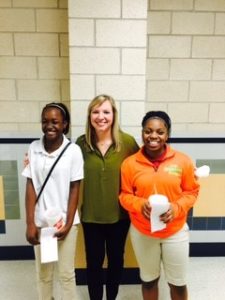 I’ve been a part of a mentoring group called the Mentor Coalition for the past five years. As soon as I joined I realized that the mentoring opportunities here are as diverse as our community. We have organizations that require a relatively low time commitment and others with a substantial time commitment. There are mentoring organizations that focus on high school students, others that focus on elementary students. Some are highly structured programs, others are a lot more flexible in their structure. In the Mentor Coalition each organization does their part, working together like the gears in a bike, to see our community changed for the better.
I’ve been a part of a mentoring group called the Mentor Coalition for the past five years. As soon as I joined I realized that the mentoring opportunities here are as diverse as our community. We have organizations that require a relatively low time commitment and others with a substantial time commitment. There are mentoring organizations that focus on high school students, others that focus on elementary students. Some are highly structured programs, others are a lot more flexible in their structure. In the Mentor Coalition each organization does their part, working together like the gears in a bike, to see our community changed for the better.
A study from Child Trends called “Mentoring: A Promising Strategy for Youth Development,” showed that “overall, youth participating in mentoring relationships experience positive academic returns, better attendance, an improve chance of continuing on to higher education, and better attitude toward school.”
Another study, “The Consequences of Dropping Out of High School, Joblessness and Jailing for High School Dropouts and the High Costs for Taxpayers,” states “The incidence of institutionalization problems among young high school dropouts was more than 63 times higher than among young four-year college graduates.”
There’s a correlation between the success of the youth of our community and health of our community. I’m not just talking about the old Michael Jackson song here, but the children really are our future. They are the future entrepreneurs, doctors, teachers, social workers, police for our community.
Our American mentality looks for the quick fix. We are in the age of instant gratification, and we have forgotten about the simplicity of consistency, the power of a smile and the impact of an encouragement.
 I was recently speaking with a truancy judge and she told me a story of a family that had been in to see her several times. By the third time she asked to see only the kids in her office. As she sat there with the kids, she pulled an alarm clock from her desk drawer. She gave it to the kids and showed them how to use it. I remember her telling me how inadequate that action felt to her and how she really wanted to do something more. I asked if she’d ever seen the kids back in her court. She paused, thought about it for a minute looked back at me and said, “actually, I haven’t seen them since.”
I was recently speaking with a truancy judge and she told me a story of a family that had been in to see her several times. By the third time she asked to see only the kids in her office. As she sat there with the kids, she pulled an alarm clock from her desk drawer. She gave it to the kids and showed them how to use it. I remember her telling me how inadequate that action felt to her and how she really wanted to do something more. I asked if she’d ever seen the kids back in her court. She paused, thought about it for a minute looked back at me and said, “actually, I haven’t seen them since.”
Don’t discount the small things. Don’t let the fear of the unknown keep you from investing in a kid’s life. Don’t believe the lie that your small investment won’t make an impact. Join more than 800 other individuals in our community who are making an impact by mentoring- go to our website and get involved!
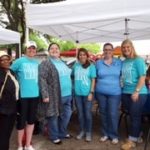 The Mentor Coalition is a group of representatives from mentoring agencies that serve young people in the Greater Waco area. These organizations work with local schools and families to provide necessary academic and social support to our area’s youth. The goal of the Coalition is to double the number of people who are currently mentoring in Waco to a total of 2,000 mentors! Please visit http://www.prosperwaco.org/mentor-coalition/ for more information on how to become a mentor.
The Mentor Coalition is a group of representatives from mentoring agencies that serve young people in the Greater Waco area. These organizations work with local schools and families to provide necessary academic and social support to our area’s youth. The goal of the Coalition is to double the number of people who are currently mentoring in Waco to a total of 2,000 mentors! Please visit http://www.prosperwaco.org/mentor-coalition/ for more information on how to become a mentor.
The Act Locally Waco blog publishes posts with a connection to these aspirations for Waco. If you are interested in writing for the Act Locally Waco Blog, please email [email protected] for more information.
by Ashley Bean Thornton
I headed into the last month of 2016 feeling more melancholy and tired than usual. I can point to three rocks in particular that have been heavy to me this year.
Racial tensions – Back in May we as a community paused to reflect on the anniversary of the illegal lynching and burning of a 17-year old black man named Jesse Washington, an event often referred to as “The Waco Horror.” Looking back on that service, it feels like a grim symmetry that the 100th anniversary year of that terrible event would also be a year fraught with race-related tension, controversy and bloody violence. In a strange way it is embarrassing for me to even mention how exhausting this tension has been for me this year. I can see in the faces and hear in the words of my Black friends and neighbors that the weight I felt this year is a weight they have already been carrying for a very long time. I know it will never weigh as heavily on me as it does on them.
Sexual assault and response at Baylor – I am a Baylor alum and I have worked there for almost twenty years, plus I am a human being and a woman. Everything about this situation has been sad and bad to me: the awful nature of the crimes themselves and the toll on the victims; the feeling of unfairness that comes with knowing that just because I am a woman I am more vulnerable to this kind of violence myself; the swirling currents and undercurrents of pain, blame, fear, sexism, and even racism in the general discussion of the events and the response; the personal concern for people whose reputations have been fairly or unfairly damaged; the angry feeling that we are being relentlessly pecked at by buzzards who won’t let the story go; the gnawing guilt that comes with “just wanting it to go away” even though I know it is far too important an issue to sweep under the rug. It has worn me out.
The presidential election – Yes, my candidate lost. But that is not why this election weighs heavily on me, at least it’s not the whole reason. More than any election I can ever remember, this one felt like a year-long slog through muck and disappointment. There is a certain beauty in watching two fine teams battle it out in any sport, including politics. When your team loses you walk away from the game feeling disappointed with the outcome, but generally good about the worthiness of the game itself. That’s how a presidential election should feel. That is not how this one felt.
I don’t want to descend into whining. (“Too late!” I can hear some of you saying.) But, I will also say that I am not particularly ashamed of my sadness. I think I am justified in feeling sad about the things I have described above. Frankly, I would wonder about myself if I didn’t feel sad. To some extent, sadness is good for you…for me…for us as a society. How might we treat each other if there were no such thing as sadness? Still, in a world that thrives on a constant feed of instant gratification, we don’t seem to have much appreciation or patience for sadness any more. I think we need to reclaim it.
The kind of sadness I am feeling now is a kind of confusion. It’s a feeling of being in limbo. It’s like I don’t understand how the world works anymore. It is unsettling – I was settled into one way of thinking and being, and evidence has come along that has unsettled me. I was settled into thinking that racial tensions had mostly gotten better, that bad things don’t happen in places full of good people (like Baylor), that there are certain unspoken rules of civil engagement that we all generally share. Now I am unsettled. Being unsettled and confused, I have slowed down to try to figure out what to do next. It may take me a while.
Just because this time is melancholy, however, doesn’t mean it is all bad. This time of sadness is a time of loss of confidence and that means it can be a time for humble learning. It is a time of vulnerability, and that means it can be a time for developing an appreciation for kindness. It’s a time of loss, and that means it can be a time for realizing what is really important. It’s a time of mixed feelings, and that means it can be a time of openness to new ways of seeing. It’s a time of disappointment and that means it can be a time for backing up and taking the long view.
In an odd way, it can be a time to relax, to give myself permission to go for a long walk, to clean out a drawer, to make something with my hands. It can be a time for still and quiet.
Sometimes we think that just because a lot of something is bad, we can’t stand even a little. But that is a mistake. Too much salt in the soup ruins it, but a little makes it better. I don’t want my whole life to be spent in confusion and limbo and melancholy, but I am not afraid of some.
I may not have intentionally invited sadness to my holiday celebrations, but since it’s here, I’m not working too hard to kick it out. Maybe it has a secret to tell me that I will need in the New Year.
 This Act Locally Waco blog post is by Ashley Bean Thornton, she works at Baylor, helps out with Act locally Waco, and facilitates the Waco Foundational Employment Network which is a part of Prosper Waco. She likes to walk and doesn’t mind at all if you honk and wave when you see her.
This Act Locally Waco blog post is by Ashley Bean Thornton, she works at Baylor, helps out with Act locally Waco, and facilitates the Waco Foundational Employment Network which is a part of Prosper Waco. She likes to walk and doesn’t mind at all if you honk and wave when you see her.
The Act Locally Waco blog publishes posts with a connection to these aspirations for Waco. If you are interested in writing for the Act Locally Waco Blog, please email [email protected] for more information.
By Rolando Rodriguez Soto
(This post is part of an on-going series about Downtown Waco. In a sense, Downtown is “everybody’s neighborhood.” In this series of blog posts we hope to contribute to the on-going conversation in Waco about what it takes to have a great downtown, and what we want for our own “Wacotown.” To see all the posts in this series, click here: Downtown Waco. – ABT)
I may not be able to say that I am a Waco native, but I have lived in Waco since I was two years old. Downtown to me has always been just place with the ALICO and where my parents went if they needed to go to a city office.
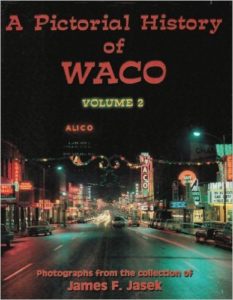 Just recently I spent a little time paging through a book called, A Pictorial History of Waco. The pictures in the “pictorial history” show a lively city with an animated downtown, full of energy. When I compare those pictures to the downtown I grew up in, I’ll admit it evokes a little melancholy. What happened? Why did downtown Waco decline?
Just recently I spent a little time paging through a book called, A Pictorial History of Waco. The pictures in the “pictorial history” show a lively city with an animated downtown, full of energy. When I compare those pictures to the downtown I grew up in, I’ll admit it evokes a little melancholy. What happened? Why did downtown Waco decline?
At the turn of the 20th century, Waco was one of the largest cities in Texas, and one of the fastest growing. “Cotton was king,” as the saying goes, and Waco was one the largest cotton markets in this country.
After the depression hit in 1929, the cotton market suffered in Waco. On top of that, the area experienced four years of the worst drought it had ever had. Then, after World War I, manufacturers found they could import cheaper cotton from South America. The market for Waco cotton plummeted. It wasn’t until a new military presence came into Waco after World War II that Waco truly pulled out of the depression.
Despite these setbacks, however, Waco maintained a vibrant, working downtown through the 1930’s and 40’s. Don Davis, a fifth-generation native Wacoan and executive director of the Historic Waco Foundation, recounted some of his memories of downtown Waco in the early 50s to me. Davis remembers going into shops, bakeries, and restaurants, going to his barber, and visiting his father’s office – all downtown.
“Growing up in Waco, I remember when downtown was very vibrant with lots of stores and lots of people,” Davis said. “Austin Ave was our main drag, and in junior high, we went up and down the street. It was exciting times.”
In 1953, a devastating tornado ripped through Waco. It was part of a 33-tornado outbreak that affected 10 different U.S. states. It struck Waco on May 11, 1953. Nearly 600 people were injured and 114 died; it is still considered the deadliest tornado in U.S. history. The twister demolished hundreds of houses and structures, and wiped out a significant portion of downtown Waco.
In the 50s and early 60s, businesses began moving out of the downtown area into new shopping centers. The first mall was the Westview Shopping Center on Valley Mills Dr. The Lake Air Mall (which is now Target) was soon to follow. With major retailers like Sears leaving downtown, Waco’s city center became abandoned.
The city attempted several times to reverse the trend, but they all ultimately failed. For example, the city closed Austin Ave to cars to create a walking, outdoor mall with canopies and trees. People still wouldn’t come to downtown. Merchants complained because they were losing business without people driving along Austin Ave. By the 70’s and 80’s the once bustling downtown Waco felt like a ghost town.
Then something good began to happen. In the early 2000s development efforts started to gain some traction. River Square Center, which currently has Spice Village, Trojan’s, Ninfa’s and other businesses and restaurants, came to life… people started moving downtown and building loft apartments. These new downtown residents needed businesses and services. Most recently McLane Stadium and the Magnolia Market have lured thousands of visitors downtown.
Mr. Davis welcomes the new developments in downtown, and he pointed out one of the best parts of the revitalization is that many of the older buildings are being saved while blending in more contemporary developments. This maintains the history and character of downtown.
Eric Ames, author of Images of America: Waco, also values the slow progress of the recent developments. He believes a measured pace ensures that the new businesses are finding a needed market in downtown as well as maintaining the historic value of Waco.
“We do have a large amount of buildings and features downtown that have been around since the late 19th century,” Ames said. “You have to be careful about changing them too much. Once you take away the historic value, you can’t get it back. “
Ames went on to say that these buildings and features in Waco help tell the stories. If everything in downtown looked new, you would lose that connection to how downtown has evolved from the vibrant era to the tornado to the failed revitalization attempts and finally to the hopeful present.
I went to high school at A. J. Moore Academy (now Indian Spring Middle School), and unlike Mr. Davis’s stories of spending his high school days hanging out on Austin Avenue, I never ventured the few blocks into downtown. Since becoming a Baylor student, however, downtown has become more of a destination.
We are moving in the right direction. The potential is there. Our best days might not be the days pictured in “The Pictorial History of Downtown Waco, ” they might be the ones just ahead of us!
 Rolando Rodriguez Soto was raised in Waco, TX, and he is currently attending Baylor University with plans to graduate in December 2016 with a Bachelor of Arts in Professional Writing & Rhetoric. After graduation, he hopes to work in Waco in the nonprofit sector to help realize the full potential of Waco. His long term goals include hopefully creating and publishing creative work whether that is a novel, short story or even a television show.
Rolando Rodriguez Soto was raised in Waco, TX, and he is currently attending Baylor University with plans to graduate in December 2016 with a Bachelor of Arts in Professional Writing & Rhetoric. After graduation, he hopes to work in Waco in the nonprofit sector to help realize the full potential of Waco. His long term goals include hopefully creating and publishing creative work whether that is a novel, short story or even a television show.
The Act Locally Waco blog publishes posts with a connection to these Aspirations for Waco. If you are interested in writing for the Act Locally Waco Blog, please email [email protected] for more information.
.
(The Heart of Texas P-20 Council includes representatives from K-12 education, higher education and employers. They meet regularly to help coordinate efforts to launch our young people into productive lives as workers and citizens. This post is one in a monthly series of posts intended to share information about the work of this important group in our community. For more posts in this series, click here: P-20 education. – ABT)
By Christine Holecek
The TSI Assessment (TSIA) is part of the Texas Success Initiative program designed to help your college or university determine if you are ready for college-level course work in the areas of reading, writing, and mathematics. If you are an incoming college student in Texas, you are required to take the TSI Assessment – unless you are already exempt through ACT or SAT or other exemptions – to determine your readiness for college-level work. Based on how you perform, you may either be enrolled in a college-level course and/or be placed in the appropriate developmental course or intervention to improve your skills and prepare you for success in college- level courses.
The HOT P-20 Council is addressing some strategies to help students and ISD’s better prepare for the TSIA and move towards College Readiness. In a recent meeting held at Education Service Center Region 12 the following strategies were addressed.
- Develop a TSIA test taking strategies guide to share out:
- Describe the type of writing prompt (use of spare paper, proof reading, use of paragraphs)
- Pay attention to the word count
- This is not the STAAR writing test
- How to physically and mentally prepare for the TSIA
- Recommend timing strategies – Testing freshman as they complete Algebra I
- Recommend resources, apps, and other tools to help students better prepare for the test
- Offer varied TSIA Boot Camp options to include:
- test taking strategies/Pre-Assessment Activity/test preparatory option
- intense training on TSI sections with test taking and college preparation strategies, Math/Writing
- refreshers for students who haven’t taken Math or writing in over a year before taking the TSI
- Make TSIA testing available to HS and college faculty – Algebra II and English III teachers to take the test and help formulate questions that are similar
- Promote the Waco Querium (A computer-based program for reinforcing STEM skils) cohort among local schools and colleges
- Disaggregate TSIA diagnostic data by ISDs and share out with individual school districts
- Share aggregate TSI diagnostic trend data with the community, use in College Prep courses and share with high school curriculum coordinators
- Getting the word out on the importance of the TSIA to parents, faculty and community
- Emphasize the importance of the College Prep courses to students, parents, faculty and school administrators
The HOT P-20 Council meets monthly at ESC Region 12 from 8:00 – 9:00. Please contact [email protected] or [email protected] to get involved or for more information.
 This Act Locally Waco blog post was written by Christine Holecek. Christine is an Education Specialist at Education Service Center Region 12 in Waco. She has worked in the area of Adult Education and Career & Technical Education for the past 25 years. She earned an AAS degree from MCC, a BAAS and Master’s Degree from the University of North Texas and is currently enrolled in the Doctoral Program in Educational Leadership and Policy Studies at Tarleton State University.
This Act Locally Waco blog post was written by Christine Holecek. Christine is an Education Specialist at Education Service Center Region 12 in Waco. She has worked in the area of Adult Education and Career & Technical Education for the past 25 years. She earned an AAS degree from MCC, a BAAS and Master’s Degree from the University of North Texas and is currently enrolled in the Doctoral Program in Educational Leadership and Policy Studies at Tarleton State University.
The Act Locally Waco blog publishes posts with a connection to these aspirations for Waco. If you are interested in writing for the Act Locally Waco Blog, please email [email protected] for more information.
By K’Lynn Childress
As the directors of the Waco High Musical Theatre Department, we’ve had the opportunity to “go” a lot of places. A few years ago, we went to the jungle with our production of Tarzan. Last year, we traveled to Paris with She Loves Me. In the early years of the musical theatre program we went to Egypt in Joseph and the Amazing Technicolor Dreamcoat and went into the woods in…well, in Into the Woods.
 Last year, as we started thinking about where we wanted to go this season, one place rose to the top of the list very quickly—under the sea. Music Theatre International, the licensing agent for many musicals, made the rights to the stage version of Disney’s The Little Mermaid available at the end of Summer 2015 and we knew that we wanted to jump at the chance to be one of the first schools to produce it. We couldn’t keep it a secret for long, and announced our plans on opening night of She Loves Me that Fall.
Last year, as we started thinking about where we wanted to go this season, one place rose to the top of the list very quickly—under the sea. Music Theatre International, the licensing agent for many musicals, made the rights to the stage version of Disney’s The Little Mermaid available at the end of Summer 2015 and we knew that we wanted to jump at the chance to be one of the first schools to produce it. We couldn’t keep it a secret for long, and announced our plans on opening night of She Loves Me that Fall.
We tend to start planning for shows right away, even when they’re months out, and this was no different. Ideas were bounced around, but when Cory Garrett (Waco High Technical Director) suggested setting our under the sea tale in the world of Old Hollywood, Vegas, Vaudeville and Follies, we knew that our love for spectacle and this classic story would perfectly blend in this concept. Research began with Cory at the design helm, and with student designer Julian Nicholson at his side, we soon had a set design that centered around the classic Vegas-style staircase with plenty of glitz, glam, and glitter thrown in (we REALLY love glitter!).

Dion Grisby, Julian Nicholson
Construction began just after the 2016-2017 school year began, with Julian Nicholson heading up the crews as Student Technical Director and Alex Lujan as Construction Crew Head. An unprecedented number of tech students showed up to every single rehearsal to tirelessly work to bring the design to life. The vast majority of the set was constructed entirely by students, under Mr. Garrett’s oversight. We never cease to be amazed at what these students are capable of doing.
While the set was going up, plans for other technical components were well underway. In a show like The Little Mermaid, you already assume that you’ll be using plenty of fun colors and creativity, but when you add the extra element of setting the story in the world of Vegas razzle-dazzle you end up with quite the job ahead of you. Fortunately, we received a grant from the WISD Education Foundation for the creation of a costume and makeup lab, so we were ready for the challenge.
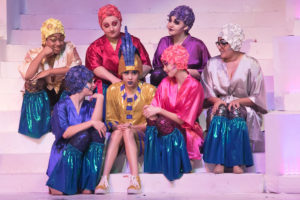 When all was said and done, we ended up with 108 different costumes for 45 performers. These costumes, designed by Mr. Garrett with the help of Student Designer Dion Grisby, were truly a labor of love. They were the product of multiple orders from Amazon (for individual pieces that were then altered, modified, and pieced together), trips to Dallas for some of the most beautiful fabric I’ve ever laid eyes on, 3 professional seamstresses, 2 choir directors who always swear they aren’t going to make any costumes but always do (Carrie Forehand and Christie Lujan are the BEST), innumerable burns from hot glue guns and dozens of students working together to create beautiful sea creatures, amazing foam wigs and the most fabulous mermaids you’ve ever seen.
When all was said and done, we ended up with 108 different costumes for 45 performers. These costumes, designed by Mr. Garrett with the help of Student Designer Dion Grisby, were truly a labor of love. They were the product of multiple orders from Amazon (for individual pieces that were then altered, modified, and pieced together), trips to Dallas for some of the most beautiful fabric I’ve ever laid eyes on, 3 professional seamstresses, 2 choir directors who always swear they aren’t going to make any costumes but always do (Carrie Forehand and Christie Lujan are the BEST), innumerable burns from hot glue guns and dozens of students working together to create beautiful sea creatures, amazing foam wigs and the most fabulous mermaids you’ve ever seen.
This was the most ambitious production WHS Musical Theatre has ever taken on, but we definitely operate with a “great risk—great reward mindset”, and our students never disappoint. This year, we added two locations to our travel list as we went both under the sea and under the big lights of Old Hollywood and Las Vegas. We’re not sure just yet where next year will take us, but we know one thing for certain—we’re so happy to be going there with the amazing students, staff, administration and supporters of Waco High and Waco ISD.

Corey Garrett, Carrie Forehand, Christie Lujan
 K’Lynn Childress is the Director of Theatre Arts at Waco High School. She, Cory Garrett, Carrie Forehand, and Christie Lujan make up the faculty of the Waco High Musical Theatre Department. Now in her 6th year of teaching at Waco High, K’Lynn is also the Speech and Debate coach and UIL Academic Coordinator. In the rare times she’s not at the school she enjoys photography, attempting to teach herself calligraphy, spending too much time on Reddit, and Steel City Pops.
K’Lynn Childress is the Director of Theatre Arts at Waco High School. She, Cory Garrett, Carrie Forehand, and Christie Lujan make up the faculty of the Waco High Musical Theatre Department. Now in her 6th year of teaching at Waco High, K’Lynn is also the Speech and Debate coach and UIL Academic Coordinator. In the rare times she’s not at the school she enjoys photography, attempting to teach herself calligraphy, spending too much time on Reddit, and Steel City Pops.
The Act Locally Waco blog publishes posts with a connection to these aspirations for Waco. If you are interested in writing for the Act Locally Waco Blog, please email [email protected] for more information.
By Caitlin Giddens
 If you’re looking for last-minute Christmas gifts, then you’re in luck. Santa’s Arts Market will be held on Saturday, December 17, from 12-4 p.m. in Heritage Square. After taking your free photo with Santa, shop from Waco’s finest arts and craft vendors— including Black Oak Art, featured in this week’s “Fixer Upper” — plus Waco Woodworks, Misguided Good Girls, Wood Burning by Marsha, E2 Creative, local jewelers, potters, painters and more.
If you’re looking for last-minute Christmas gifts, then you’re in luck. Santa’s Arts Market will be held on Saturday, December 17, from 12-4 p.m. in Heritage Square. After taking your free photo with Santa, shop from Waco’s finest arts and craft vendors— including Black Oak Art, featured in this week’s “Fixer Upper” — plus Waco Woodworks, Misguided Good Girls, Wood Burning by Marsha, E2 Creative, local jewelers, potters, painters and more.
This arts market is more than a shopping opportunity — it’s a collection of our community’s creativity and a celebration of Downtown Waco’s Cultural District designation. “This year has been all about artists coming together to support each other,” Fiona Bond, executive director of Creative Waco, said.
 This Saturday, you can shop for handmade Christmas gifts at the Waco Downtown Farmers Market from 9 a.m. to 1 p.m., and then come to Santa’s Arts Market to finish your shopping list. There will be a range of goods for sale, including leather, metal, pottery, canvases and more traditional paintings and prints.
This Saturday, you can shop for handmade Christmas gifts at the Waco Downtown Farmers Market from 9 a.m. to 1 p.m., and then come to Santa’s Arts Market to finish your shopping list. There will be a range of goods for sale, including leather, metal, pottery, canvases and more traditional paintings and prints.
Susan Sistrunk and Jesus Rivera, two local artists commissioned to create ornaments for the State Capitol Christmas Tree, will sell custom painted ornaments at the market. Sistrunk’s glitter-filled ornaments will feature five different landmarks in Waco. “The customer will choose the fill and the landmark, and the ornament will be painted upon request,” Sistrunk said. “They will each be signed and numbered for the occasion, making this an extremely limited edition.”
At Santa’s Arts Market, you’ll find a truly unique gift while enjoying live jazz music, cute carolers, treats from Pokey-O’s and the best hot chocolate in town. Bring your families and pets and celebrate our city’s creativity!
 Caitlin Giddens is a writer, an educator and an arts enthusiast. She enjoys instilling her love of literature and art in others. You can contact Caitlin at [email protected].
Caitlin Giddens is a writer, an educator and an arts enthusiast. She enjoys instilling her love of literature and art in others. You can contact Caitlin at [email protected].
The Act Locally Waco blog publishes posts with a connection to these aspirations for Waco. If you are interested in writing for the Act Locally Waco Blog, please email [email protected] for more information.
By Jenuine Poetess
Whatever your beliefs—political, spiritual, philosophical, existential—we can all agree that this particular moment in time holds a greater measure of darkness than many others. If for no other reason than it being, very simply, the time of year when shadows stretch long across the bare landscapes and night lingers for extra Winter hours. There are more days where the sun remains shrouded behind thick, grey, clouds. The dazzling vibrance of Autumn is a memory and the shining hues of Spring are a fast-held hope.
We are in the in-between. The middle book of the trilogy. And often, the in-between is bleak.
Artists have long worked light motifs into their work at this time. This is also a season when spirituality and creativity intersect; the tools and artifacts of our diverse spiritual practices are artworks in and of themselves.
But light, light is at the center of so many ceremonies and rituals—from lighting the menorah for Hanukkah, to lighting the Advent wreath, to lighting mosques for Milad un Nabi, to lighting the kinara for Kwanza, to lighting Solstice candles, to a multitude of traditions worldwide reminding us to foster hope, even on the darkest of nights.

(Photo by @JenuineArtworks)
We use so many kinds of art to honor, celebrate, and cultivate our identities during this season. It is in the music we play, the vestments we don, the special culinary treats we conjure, the adornments we hang, the gifts we fashion (or have fashioned by others), the wrappings and trappings, the gatherings we curate, and the traditions we pass down to the next generation.
As I reflect on this particular season of Winter, of darkness, here and now in December 2016, I cannot help but also consider the matters of social justice demanding our attention, our action, our creative response—domestically and globally. As a practitioner of the visual and spoken-word arts, I am constantly pondering the role of arts as well as my responsibility as an artist. Chelsea Cristene, author at Role Reboot writes, “The beating heart of music, art, and literature knows that artists are morally obligated to expose human and societal truths, or else the death of our humanity is certain.”
I am well aware that not everyone agrees with this outlook on the arts and their creators. Even within the community of artists there are vastly differing notions around the purpose and motivation pushing our creativity ever onward. Being who I am, however, I cannot separate the personal from the political or the political from the personal—it is all intertwined. We can understand how an installation, or a spoken-word poem, or a journalist’s photo, or even a popular musical (*cough*HAMILTON*cough*) can be overt art-as-activism. Yet, I boldly assert, that even the most aesthetically pleasing piece of art is a protest—against all that is ugly, chaotic, and dark in this world. Poet and artist, Luis Javier Rodriguez has said that, “the first move from chaos isn’t order, it’s creativity.”
Consider the defiant resilience of love poems, love songs, love dances, love paintings, love sculptures, love confessions, in the face of so much fear, hate, and violence. Some would argue, like the unknown author of this quote scrawled onto a wall (which, by the way, is art…is it not?), that, “art is our only salvation against the horror of existence.”

(Image source and author unknown)
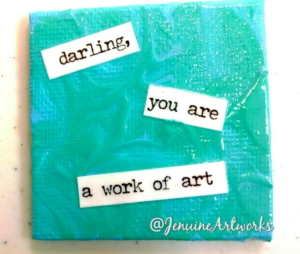 I have no intention of debating or disrespecting anyone’s political or spiritual beliefs with this musing reflection. What weighs heavily on my heart and mind in this season is how we can continue to create, to speak, to dance, to compose, to sculpt, to photograph, to tell, to design, to weave, to make in such a way that perpetuates light and hope and love and truth. THAT is my challenge to you, my exquisitely diverse community: How do we continue to thrive despite dire circumstances? We create. However big or small, the act of creating is an act of thriving, an act of loving, an act of believing.
I have no intention of debating or disrespecting anyone’s political or spiritual beliefs with this musing reflection. What weighs heavily on my heart and mind in this season is how we can continue to create, to speak, to dance, to compose, to sculpt, to photograph, to tell, to design, to weave, to make in such a way that perpetuates light and hope and love and truth. THAT is my challenge to you, my exquisitely diverse community: How do we continue to thrive despite dire circumstances? We create. However big or small, the act of creating is an act of thriving, an act of loving, an act of believing.
We create community. We create family. We create joy. We create life. We create solutions. We create remembrances. We create solidarity. We create meaning. We create kindness. We create love. We create ourselves.
We become art.
For me, this is the most magnificent gift of the season: our ability to create even in the midst of loss, in the midst of doubt, in the midst of grief, in the midst of shadows. There is indeed a certain magic in this creative resilience—by whatever name you choose to call that wonder.
 Jenuine Poetess is an artist, visionary, and community organizer. In 2010, she founded In the Words of Womyn (ITWOW), an international, grass-roots, written and spoken-word arts project with chapters throughout Los Angeles, CA; Waco, TX; and Lebanon. Jenuine is the founder of Waco Poets Society and co-founder of the Central Texas Artist Collective. She writes, organizes, and creates rooted in the fierce conviction that holding intentional space, access, and opportunity for all people to foster their creative health is a matter of justice and is a vital asset to the sustainable thriving of communities. She currently lives and poems in Central Texas where she enjoys finding new ways to disrupt the homeostasis of her city. You can contact her at: [email protected] .
Jenuine Poetess is an artist, visionary, and community organizer. In 2010, she founded In the Words of Womyn (ITWOW), an international, grass-roots, written and spoken-word arts project with chapters throughout Los Angeles, CA; Waco, TX; and Lebanon. Jenuine is the founder of Waco Poets Society and co-founder of the Central Texas Artist Collective. She writes, organizes, and creates rooted in the fierce conviction that holding intentional space, access, and opportunity for all people to foster their creative health is a matter of justice and is a vital asset to the sustainable thriving of communities. She currently lives and poems in Central Texas where she enjoys finding new ways to disrupt the homeostasis of her city. You can contact her at: [email protected] .
The Act Locally Waco blog publishes posts with a connection to these aspirations for Waco. If you are interested in writing for the Act Locally Waco Blog, please email [email protected] for more information.
























